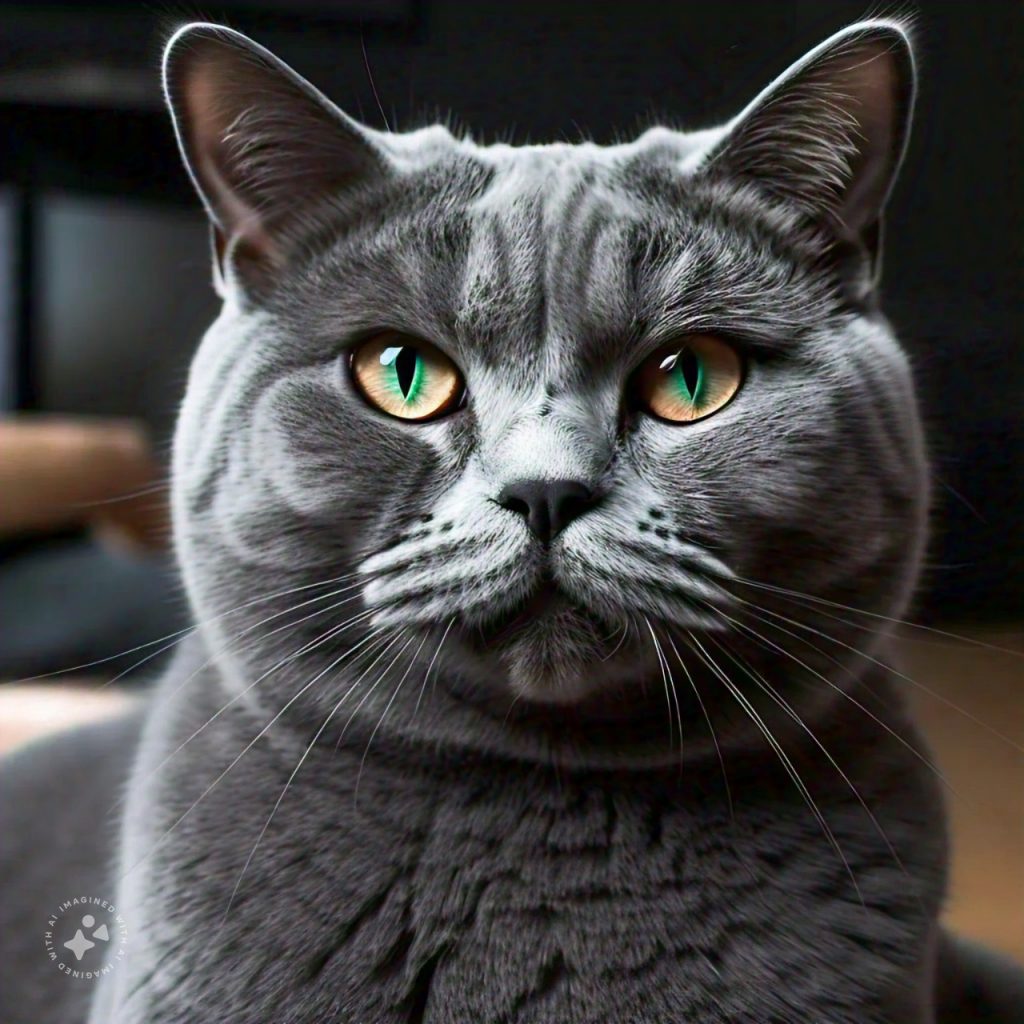The British Shorthair is one of the oldest and most popular cat breeds in the world, known for its distinctive appearance and charming personality. This article will delve into the breed’s history, characteristics, health considerations, care requirements, and tips for potential owners.
1. History of the British Shorthair
The British Shorthair’s history dates back to ancient Rome when Roman soldiers brought cats to Britain to control the rodent population. Over the centuries, these cats developed into a distinct breed, primarily through natural selection and selective breeding. They were officially recognized as a breed in the late 19th century.
During the Victorian era, the British Shorthair gained popularity at cat shows, showcasing their robust build and striking blue coat. However, World War I and II severely impacted the breed’s population, leading to a decline in their numbers. To revive the breed, breeders crossed British Shorthairs with other breeds, such as Persians and Russian Blues. Today, the British Shorthair is cherished worldwide for its unique traits.
2. Physical Characteristics
2.1 Appearance
The British Shorthair is a medium to large cat with a muscular, stocky build. Key features include:
- Head: Round and broad with full cheeks, a short, blunt muzzle, and a broad forehead.
- Eyes: Large, round, and expressive, typically copper or gold in color, giving them a captivating look.
- Ears: Small and rounded at the tips, set wide apart.
- Body: Compact and powerful, with a deep chest and thick legs.
- Tail: Medium length, thick at the base, tapering to a rounded tip.
- Coat: Dense, plush, and short, with a variety of colors and patterns, the most common being the classic blue.
2.2 Colors and Patterns
The British Shorthair comes in a wide range of colors, including:
- Solid: Blue, black, white, chocolate, lilac, red, cream, and more.
- Tabby: Classic, mackerel, spotted, and ticked.
- Bi-color: A combination of white and any other color.
- Colorpoint: Similar to the Siamese with darker points on the ears, face, paws, and tail.
3. Temperament and Behavior
3.1 Personality Traits
British Shorthairs are known for their calm and easygoing nature. They are:
- Affectionate: They enjoy spending time with their owners and often form strong bonds.
- Independent: While they love companionship, they are not overly needy and can entertain themselves.
- Playful: They have a playful side and enjoy interactive toys, but they are not as hyperactive as some breeds.
- Gentle: They tend to get along well with children and other pets, making them excellent family companions.
3.2 Communication
British Shorthairs are not particularly vocal but will communicate through soft trills and chirps. They express their needs and desires through body language, often seeking attention with gentle nudges or by sitting close to their owners.
4. Health Considerations
4.1 Common Health Issues
Like all breeds, British Shorthairs are prone to certain health problems. Some of the most common issues include:
- Hypertrophic Cardiomyopathy (HCM): A genetic condition that affects heart muscle thickening, leading to potential heart failure.
- Obesity: Their stocky build can make them prone to weight gain, so monitoring their diet is crucial.
- Dental Issues: They may be susceptible to dental disease, making regular dental care essential.
4.2 Lifespan
With proper care, British Shorthairs can live between 12 to 20 years, depending on genetics, diet, and overall health.
5. Care and Maintenance
5.1 Diet
A balanced diet is crucial for the health of a British Shorthair. Choose high-quality commercial cat food formulated for their age and activity level. It’s advisable to consult with a veterinarian to determine the best diet plan.
5.2 Grooming
Despite their short hair, British Shorthairs benefit from regular grooming to remove loose hair and reduce shedding. A weekly brushing is usually sufficient, but during shedding seasons, more frequent grooming may be necessary.
5.3 Exercise
While not excessively active, British Shorthairs require regular playtime to maintain a healthy weight and prevent boredom. Interactive toys, feather wands, and puzzle feeders can provide mental stimulation and physical exercise.
5.4 Veterinary Care
Regular veterinary check-ups are essential to monitor the cat’s health and catch any potential issues early. Vaccinations, flea control, and routine dental care should also be part of their healthcare regimen.
6. Bringing a British Shorthair Home
6.1 Adoption vs. Breeder
When considering a British Shorthair, potential owners can choose between adopting from a shelter or purchasing from a reputable breeder. Adoption can provide a loving home for a cat in need, while reputable breeders can offer specific lineage and health guarantees.
6.2 Preparing Your Home
Before bringing a British Shorthair home, ensure your living space is cat-proofed. Remove any hazards, provide scratching posts, cozy beds, and litter boxes, and create a stimulating environment with toys and climbing structures.
7. Conclusion
The British Shorthair is a charming and delightful breed, perfect for families and individuals alike. With their striking appearance, gentle temperament, and relatively low-maintenance care requirements, they make excellent companions. By understanding their needs and providing proper care, you can enjoy many happy years with your British Shorthair. Whether you choose to adopt or purchase, welcoming one of these affectionate cats into your home is sure to enrich your life.
By covering everything from history and physical characteristics to care and health considerations, this comprehensive guide aims to provide valuable insights for anyone interested in the British Shorthair breed.

